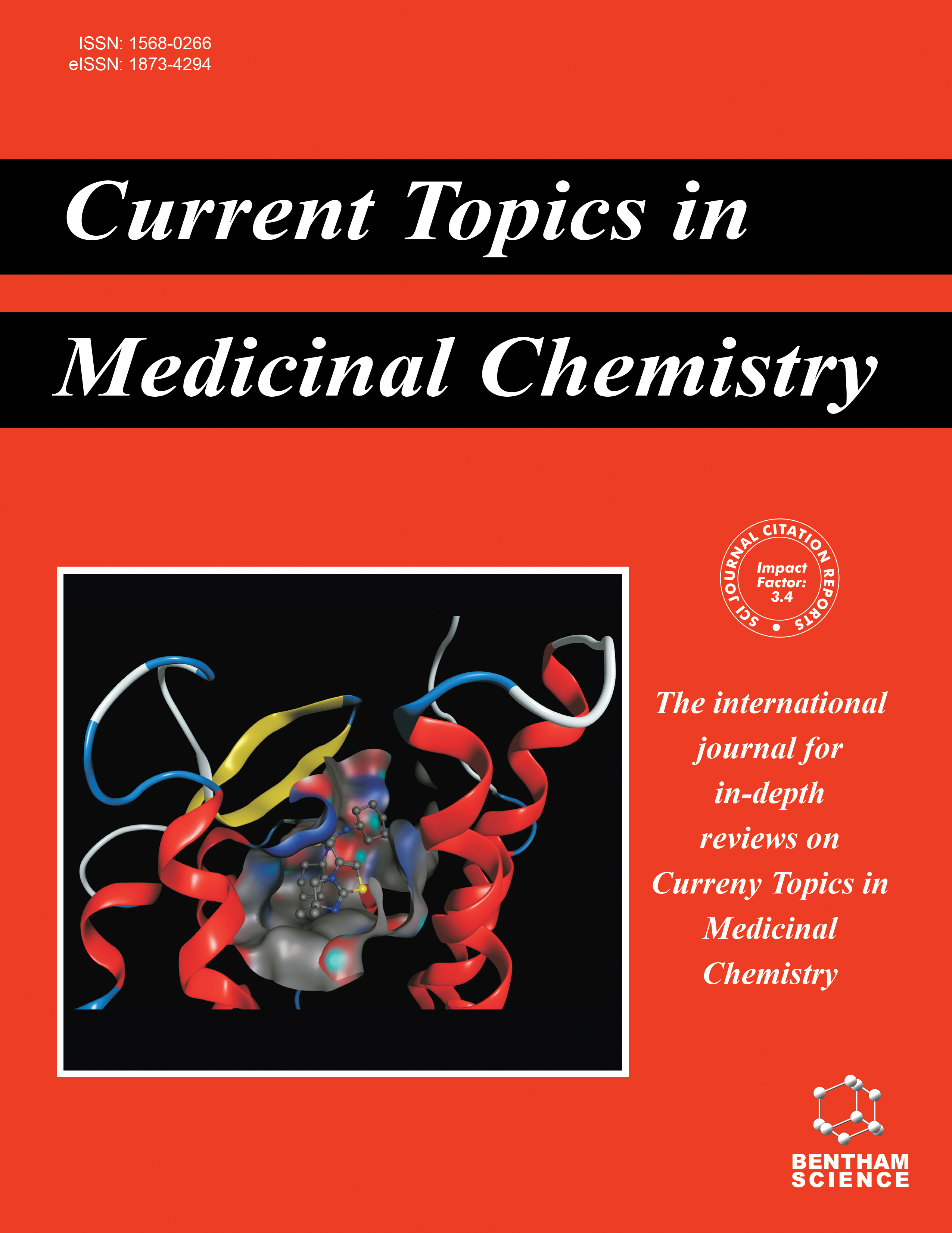- Home
- A-Z Publications
- Current Topics in Medicinal Chemistry
- Previous Issues
- Volume 2, Issue 10, 2002
Current Topics in Medicinal Chemistry - Volume 2, Issue 10, 2002
Volume 2, Issue 10, 2002
-
-
L - Nucleosides: Antiviral Activity and Molecular Mechanism
More LessDrug discovery for antiviral chemotherapy has provided the effective treatment of numerous viral diseases. Among antiviral agents used in therapy, nucleoside analogues have been particularly useful. In fact, almost twenty nucleosides are currently used in antiviral therapy, seven of which are for the treatment of HIV infection. In the search for new and effective agents within this class, the focus has recently expande Read More
-
-
-
Carbocyclic Nucleosides (Carbanucleosides) as New Therapeutic Leads
More LessMany structural modifications have been made on the naturally occurring nucleosides in the search for medicinal agents that will interfere with the utilization of the natural compounds. One such area of pursuit has been the replacement of the oxygen of the ribofuranose ring of common nucleosides with a methylene unit (resulting in a cyclopentyl ring) leading to biologically meaningful carbanucleosides (carbocyclic nucle Read More
-
-
-
Ring-Expanded (“Fat”) Nucleosides as Broad-Spectrum Anticancer and Antiviral Agents
More LessBy R.S. HosmaneRing-expanded (“fat”) nucleosides (RENs) described in this review are analogues of purine nucleosides containing a 5:7-fused imidazodiazepine or imidazotriazepine ring system. They are both of natural and synthetic origin, and are of chemical, biochemical, biophysical, as well as medicinal interest. The important natural RENs include coformycin, pentostatin, azepinomycin, adechlorin, and adecypenol. A majority of them are Read More
-
-
-
cycloSal-d4TMP Pronucleotides-Structural Variations, Mechanistic Insights and Antiviral Activity
More LessAuthors: C. Meier, J. Renze, C. Ducho and J. BalzariniPronucleotides represent a promising alternative to improve the biological activity of nucleoside analogues against different viral diseases. The basic idea is to achieve nucleotide delivery into cells, bypassing limitations with intracellular formation of nucleotides from their nucleoside precursors. The cycloSal-concept is one of several pronucleotide systems reported so far. For the nucleoside analogue d4T, the cycloSal Read More
-
-
-
RNA as a Target for Drug Design, the Example of Tat-TAR Interaction
More LessAuthors: M. Froeyen and P. HerdewijnOne of the new targets in the battle against HIV-1 infection is the interaction between the viral transactivator and the transactivation response (TAR) element, which is necessary for HIV-1 replication. After an overview of the most recent structural studies of the Tat-TAR system, new TAR-targeted inhibitors are presented in several classes:antisense oligonucleotides, cationic peptides, intercalators and a large class of small Read More
-
-
-
Flexible and Frozen Sugar-Modified Nucleic Acids - Modulation of Biological Activity Through Furanose Ring Dynamics in the Antisense Strand
More LessAuthors: M.M. Mangos and M.J. DamhaA comparison of carbohydrate modified nucleic acids has identified key structural characteristics in antisense oligonucleotides (AON) that are necessary for sufficient clinical utility, including increased duplex stability towards RNA complements and improved hydrolytic resistance towards general serum and cellular nucleases. As such, the exogenous addition of short, synthetic oligonucleotides can influence cellular RNA m Read More
-
Volumes & issues
-
Volume 25 (2025)
-
Volume 24 (2024)
-
Volume 23 (2023)
-
Volume 22 (2022)
-
Volume 21 (2021)
-
Volume 20 (2020)
-
Volume 19 (2019)
-
Volume 18 (2018)
-
Volume 17 (2017)
-
Volume 16 (2016)
-
Volume 15 (2015)
-
Volume 14 (2014)
-
Volume 13 (2013)
-
Volume 12 (2012)
-
Volume 11 (2011)
-
Volume 10 (2010)
-
Volume 9 (2009)
-
Volume 8 (2008)
-
Volume 7 (2007)
-
Volume 6 (2006)
-
Volume 5 (2005)
-
Volume 4 (2004)
-
Volume 3 (2003)
-
Volume 2 (2002)
-
Volume 1 (2001)
Most Read This Month
Article
content/journals/ctmc
Journal
10
5
false
en


